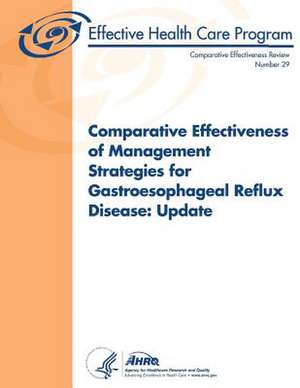Comparative Effectiveness of Management Strategies for Gastroesophageal Reflux Disease
Autor U. S. Department of Heal Human Services, Agency for Healthcare Resea And Qualityen Limba Engleză Paperback
Preț: 160.23 lei
Preț vechi: 168.66 lei
-5% Nou
Puncte Express: 240
Preț estimativ în valută:
30.66€ • 31.90$ • 25.31£
30.66€ • 31.90$ • 25.31£
Carte disponibilă
Livrare economică 22 martie-05 aprilie
Preluare comenzi: 021 569.72.76
Specificații
ISBN-13: 9781484054802
ISBN-10: 1484054806
Pagini: 246
Dimensiuni: 216 x 279 x 13 mm
Greutate: 0.58 kg
Editura: CREATESPACE
ISBN-10: 1484054806
Pagini: 246
Dimensiuni: 216 x 279 x 13 mm
Greutate: 0.58 kg
Editura: CREATESPACE
